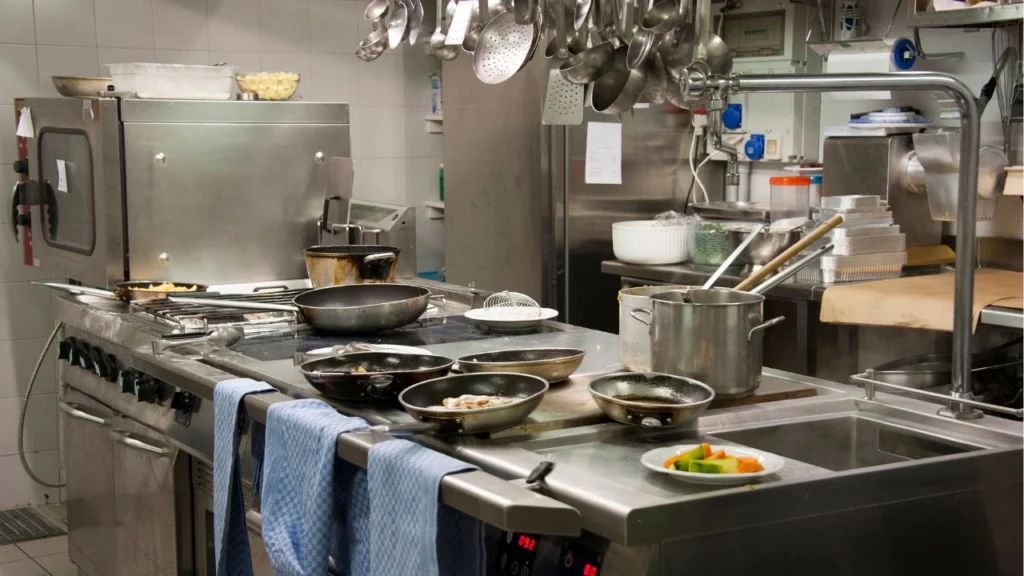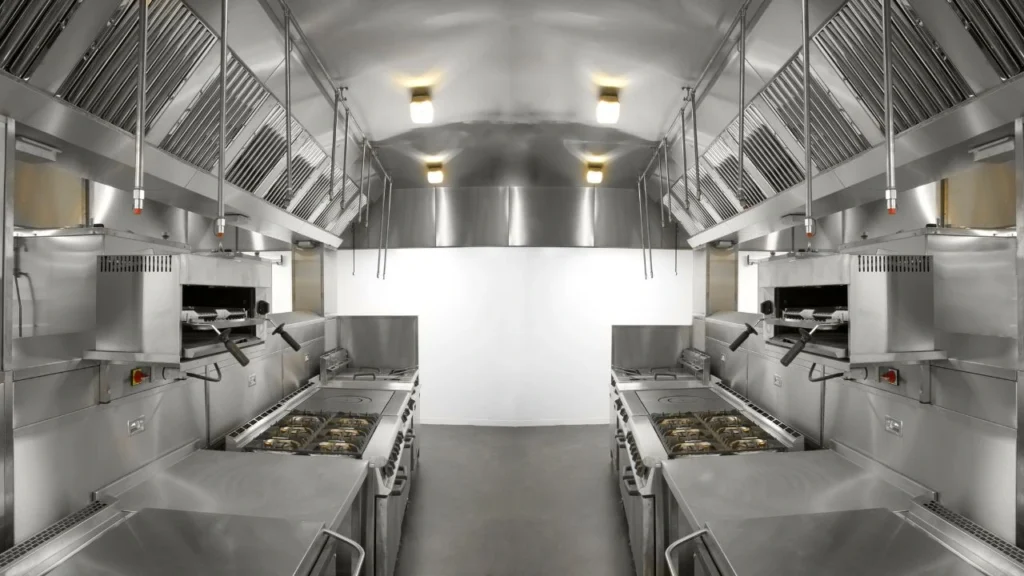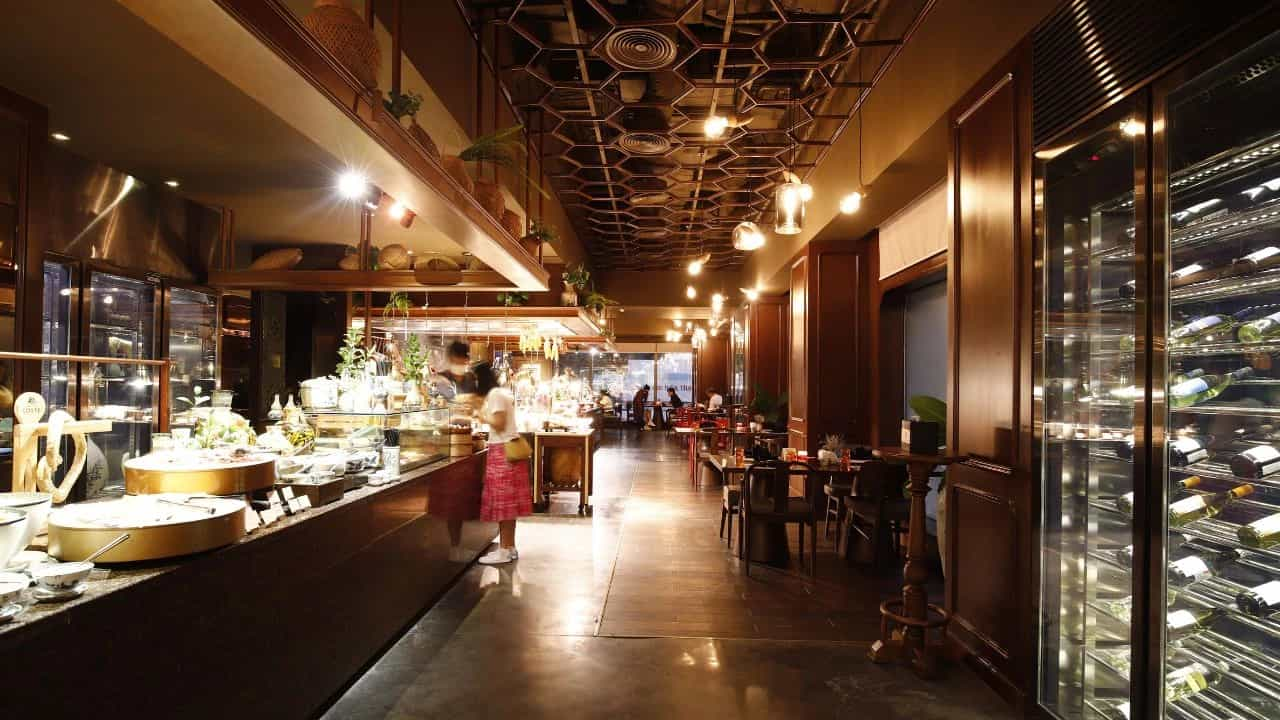In every successful restaurant, the commercial kitchen is key. Yet, over 60% of restaurant fires are linked to cooking equipment. Thus, regular kitchen equipment inspections are vital. They help avoid health violations and unexpected shutdowns.
Creating a thorough kitchen inspection plan is crucial. Health inspections come without warning and require constant readiness. Such inspections are critical for keeping food safe and kitchens running smoothly. They have a big impact on a restaurant’s image.
Inspecting everything from fryers to fridges is essential for maintaining top food quality, safety, and efficiency. It goes beyond just surface-level cleanliness; it’s about preventing costly breakdowns, reducing safety hazards, and meeting strict regulatory standards. A well-executed inspection plan not only protects your customers and staff but also safeguards your restaurant’s reputation and bottom line. Let’s explore how implementing thorough kitchen equipment inspections can elevate your operations and set a lasting standard of excellence.
Why Regular Equipment Inspections Matter
In a busy restaurant kitchen, making sure everything runs smoothly is crucial. A thorough kitchen maintenance checklist is essential. Regular checks on kitchen equipment can save you from the high costs of sudden failures. These failures could cause downtime, expensive repairs, and unhappy customers.
The Economic Impact of Equipment Failures in Restaurants
Imagine your cooler breaks down during a peak time. This not only stops service but could also lead to food spoilage and health issues. This shows how key regular checks are. By following a strict checklist, restaurants can cut down equipment problems by 30%. This means more savings and better safety.
- Regular inspections lessen the chance of illnesses from food, making for safer eating.
- Keeping up with kitchen checks helps avoid costly fines and lost sales from sudden closures.
- Restaurants with a strict check schedule often see happier customers, thanks to reliable service.
A good maintenance plan means all kitchen gear works well, from small to large items. This keeps things running smoothly and can even make equipment last longer. This way, restaurants work better and stay efficient.
How This Guide Helps Restaurant Managers
This guide gives managers key tips for making and using a restaurant inspection checklist. It covers what to check to avoid equipment problems. With cool gadgets like infrared thermometers and mobile apps, the inspection process is easier. This helps keep everything accurate and on time.
- Teaching staff about strong maintenance practices builds a culture of regular checks.
- Using tech solutions like Manifestly Checklists helps keep everything clean and in order.
- Creating inspection schedules that don’t mess with kitchen hours makes sure everything stays in top shape.
By focusing on frequent equipment checks and using the latest tools and methods, restaurant managers promote a safe, efficient, and reliable work environment. These are the keys to running a successful food service business.
Understanding the Importance of Regular Equipment Inspections

Restaurant owners and chefs strive to keep high standards in their kitchens for quality and safety. Regular checks are key, including food service and commercial kitchen inspections. They ensure equipment works well and safely, protecting staff and customers. Let’s explore the importance of these inspections and the financial risks of ignoring them.
Key Benefits of Regular Inspections
- Maintaining compliance with health and safety regulations.
- Reducing the risk of equipment malfunctions that can lead to serious accidents.
- Extending the lifespan of kitchen equipment, thereby saving on costly replacements.
- Ensuring a consistent quality of food service by preventing unexpected operational disruptions.
Real-World Examples of Preventing Equipment Failures
Proper maintenance routines have stopped many kitchen disasters. Regular safety checks catch problems like gas leaks or electrical faults early. This keeps the restaurant running smoothly and upholds its safety reputation with customers.
Financial Consequences of Neglecting Maintenance
Ignoring maintenance can be financially harmful. Beyond immediate repair costs, fines for not following safety standards can be huge. Inadequate maintenance can cause accidents, needing costly repairs and causing downtime. Serving customers and making money becomes hard. Regular upkeep costs less than fixing or replacing broken equipment.
Steps to Schedule Regular Equipment Inspections
Having a plan for regular equipment inspections is key for any restaurant’s success. It ensures everything runs smoothly and safely. Setting up these inspections can be easy. Following a few important steps, restaurant managers can keep their kitchens in top shape.
Create a Detailed Equipment Inventory
The first step is making a full list of all kitchen equipment. This list should note when items were bought, warranty times, and care tips from the makers. A complete inventory helps build a good kitchen care plan. This makes it easier to check each item based on its needs.
Determine Inspection Frequency
Then, it’s important to decide how often to check each piece of equipment. The number of times you check should depend on how much you use the equipment, the risks if it fails, and what the maker suggests. For example, items used a lot like ovens may need monthly checks. Less used items might only need checks every six months. Setting the right schedule helps avoid health risks and keeps the kitchen running well.
Develop a Master Inspection Calendar
After planning what and how often to inspect, the next step is to make a master calendar for all inspections. This helps make sure inspections are spaced out right and that no piece of equipment is missed. Tools like LLumin’s CMMS+ can help automate this, giving reminders and organizing records.
Assign Responsibilities to Qualified Staff
Last, it’s crucial to pick the right staff for inspection duties. Everyone involved should know their tasks, have the right tools, and know the kitchen care checklist well. Holding regular training can make them more effective and ensure they follow safety rules.
By following these steps, restaurants can keep their equipment in good shape and meet health and safety rules. Using a detailed kitchen care checklist makes equipment last longer and keeps productivity high. This ensures a safe place for staff to work.
Preparing for Equipment Inspections: Best Practices

As a restaurant owner, keeping your kitchen running smoothly is essential. This means sticking to kitchen rules, regular maintenance, and detailed equipment checks. Best practices for these inspections can boost safety and make your kitchen run better. Here’s how to get ready:
Crafting Comprehensive Inspection Checklists
Making thorough checklists is key for a good equipment check-up. Include everything the equipment’s maker suggests, and tailor it for daily or monthly reviews. This way, you make sure everything important is checked according to kitchen standards. Your list should check things like temperatures, electrical cords, and cleanliness.
Training Staff for Effective Inspections
Teaching your team is vital for keeping equipment in tip-top shape. Trained employees can spot problems early, saving money and avoiding health issues. They should know how to use the checklists, why each item is important, and how to handle common problems like contamination.
Coordinating Inspections to Avoid Interruptions
Planning inspections wisely helps keep your kitchen running without hitches. Do them when it’s quiet, so you don’t disrupt service. This lets you examine everything carefully without lowering service quality.
Leveraging Technology for Inspection Efficiency
Using technology can make inspections quicker and more accurate. Digital tools and apps help you schedule checks, record results, and remind you of maintenance. This makes the whole process more efficient, keeping your kitchen up to code and safe.
Types of Equipment Inspections
If you’re running a restaurant or cooking as a chef, you must understand equipment inspections. Each type of inspection has its purpose, helping your kitchen meet laws and work better and safer. Adding a checklist for inspecting your kitchen will help keep it clean and equipment running smoothly.
Pre-Use Inspections for Daily Safety
It’s key to do daily checks on your kitchen tools and equipment. This helps spot dangers before they cause accidents or equipment failure. Making sure safety guards work and looking for wear and tear is vital in these checks.
Periodic Inspections: Weekly, Monthly, Annual Cycles
For ongoing safety and efficiency, kitchens need inspections at set times – weekly, monthly, or yearly. These reviews are more in-depth than daily ones. They look at both the equipment and workplace. This helps find problems that aren’t clear in daily checks but could later become big issues.
Preventive Maintenance Inspections
Preventive maintenance follows the makers’ advice to keep equipment from breaking down. These inspections might mean replacing parts, updating software, or deep cleaning. They’re key for keeping kitchen tools working well for a longer time.
Regulatory Compliance Inspections
Laws require certain inspections to make sure your kitchen follows health and safety rules. These checks could happen without warning. They look at many things, like how clean your kitchen is, how food is handled, and how clean your staff are. Having a good checklist for kitchen hygiene is crucial.
Utilizing Technology for Equipment Inspections

Today, technology is key in making work easier, and this is true for kitchen equipment inspection too. Using tech helps meet kitchen code compliance and improves regular equipment maintenance for restaurants. It makes inspections more accurate and thorough.
Benefits of Digital Inspection Tools and Mobile Apps
Digital tools and mobile apps make inspecting equipment smoother. They offer real-time data and lessen mistakes. This ensures proper records for compliance and upkeep.
Using apps, restaurants can continuously inspect kitchen equipment. This leads to less equipment failures and downtime.
Asset Tracking and IoT for Real-Time Monitoring
IoT and asset tracking let us monitor equipment live. They alert staff about issues needing prompt action. This means restaurants can fix problems before they worsen, avoiding big repair costs and keeping the kitchen running smoothly.
Predictive Maintenance Algorithms for Proactive Management
AI-driven predictive maintenance is essential for spotting problems early. It analyzes past and current data to foresee equipment failures. By scheduling repairs in advance, service isn’t disrupted. This smart management keeps kitchen tools working longer and saves money.
Examples of Popular Digital Tools for Restaurant Inspections
Innovative digital tools are improving kitchen inspections significantly. Platforms like InspectPro and Safety Evolution offer specialized solutions. They make following inspection rules easier and more consistent, keeping kitchens safe and up to code. Adopting these tools boosts efficiency and ensures safety.
In conclusion, using technology for equipment checks is a smart, effective, and rule-following way to manage restaurant kitchens. It allows owners to foresee problems, avoid equipment breakdowns, and meet safety standards. This can save money and improve service quality.
Overcoming Common Challenges in Equipment Inspection Programs
Handling equipment in commercial kitchens is not just about keeping things running smoothly. It’s also about meeting strict rules. Knowing how to prepare for kitchen equipment inspection is vital for a restaurant’s long-term win and safety. In this piece, we explore the big hurdles in these inspections and how to tackle them.
Resistance from Staff: Gaining Buy-In
To deal with team resistance, start with teaching and talking. It’s crucial to hold clear training that shows the value of a kitchen safety checklist. It highlights how this reduces accidents at work by 15%. By explaining the direct benefits for their daily tasks, team members will likely get on board with excitement.
Managing Time Constraints in Busy Kitchens
In busy kitchens, it’s important to fit in inspections without messing up the flow of work. Planning checks during quieter times and using tech can make things quicker. Kitchens can work 10% better if their gear is kept in great shape through regular checks. This approach helps include safety steps into daily work smoothly.
Standardizing Inspection Practices Across Teams
Keeping a consistent way of doing inspections is crucial. Setting the same steps for everyone can cut down overlooked problems by 30%. Everyone knowing and following the same rules helps avoid mix-ups. It makes every check more trustworthy. This greatly helps in keeping the kitchen safe and running well.
Addressing Compliance Issues with Simple Solutions
Meeting safety and health rules can be simple. Using digital tools like CMMS helps kitchens get their facts right by 40% and lowers rule-following troubles by 25%. These tools offer easy digital lists and instant updates. They make sticking to tough rules easier, turning regular checks into less of a stress and more doable.
Each method we’ve talked about is key in making inspection plans in commercial kitchens easier to manage. By facing these usual hurdles with a clear plan, restaurant bosses can greatly improve how their spaces work and follow rules. This all leads to a more winning business.
Maximizing the Benefits of Your Equipment Inspection Program

Encapsulating insights from this guide, we see the importance of thorough equipment inspections for restaurant longevity. Regular maintenance and safety checks ensure a safer kitchen and success. A kitchen inspection checklist is essential. It ensures peak performance and safety. You can make a list of weekly, monthly, or annual inspections, but as you work, the items on the list and their frequency may change. For example, if you have a lot of deep-fried food on your menu, then checking and replacing the filters for the deep-fryer may be a more frequent need.
Key Takeaways for Scheduling and Preparing Inspections
For those aiming for excellence, remember, a kitchen safety checklist is your first line of defense. These preventive actions keep culinary services top-notch, protecting everyone involved. Regular checks show how committed we are to our practices and operational ethos.
Long-Term Benefits of a Well-Executed Program
Through regular equipment checks, we avoid sudden costs from system failures and injuries. Adhering to OSHA standards is a commitment to excellence. It shows a dedication to leading in both safety and efficiency, setting us apart.
Start Building Your Inspection Checklist Today
Let this guide be your path through the challenges of kitchen management. Start by creating your kitchen inspection checklist. This will improve daily operations and show commitment to excellence. Embrace foresight and start your checklist today.
FAQ
What are the specific equipment inspection requirements for commercial kitchens and restaurants?
Equipment inspections in commercial kitchens must comply with health codes, ensuring appliances are clean, functional, and safe. This includes checking fire suppression systems, electrical connections, gas lines, and mechanical components. Regular inspections help maintain compliance, prevent hazards, and ensure seamless operations.
What are the most common equipment-related accidents in commercial kitchens?
Common accidents include burns from hot surfaces, cuts from sharp tools, and injuries caused by faulty machinery. These incidents often result from poorly maintained equipment or a lack of proper training. Regular maintenance and safety protocols are essential to minimize these risks.
How often should kitchen equipment be inspected in restaurants?
Daily inspections help spot immediate issues, while monthly checks ensure deeper maintenance needs are addressed. Annual inspections are typically required for compliance with health and safety regulations. These schedules may vary based on the intensity of use and specific equipment needs.
What should be included in a restaurant kitchen equipment inspection checklist?
A comprehensive checklist should cover electrical connections, gas leaks, thermostat calibration, grease trap cleanliness, and fire suppression systems. It should also include checks for blade damage, refrigeration temperatures, and cooking equipment functionality. Tailoring the checklist to specific restaurant needs ensures thorough evaluations.
What are the long-term benefits of regular equipment inspections for restaurants?
Regular inspections extend the lifespan of equipment, reduce unexpected downtime, and enhance workplace safety. They also ensure compliance with regulations and minimize repair costs over time. By maintaining reliable equipment, restaurants can improve efficiency and build customer trust.
Resources
https://nextbite.io/commercial-kitchen-requirements/
https://ccpia.org/commercial-kitchen-inspection-types-of-appliances
https://www.quora.com/How-often-should-commercial-kitchen-equipment-be-serviced-or-inspected








